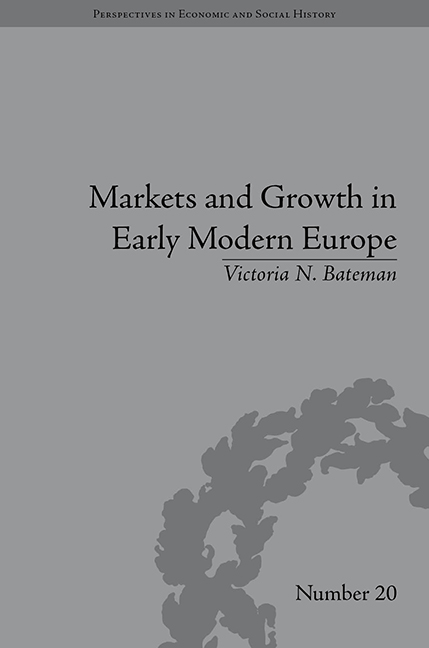Book contents
- Frontmatter
- CONTENTS
- List of Figures and Tables
- Acknowledgements
- Preface
- Introduction
- 1 Markets in History: A Survey
- 2 The Course of Early Modern Market Integration: Country-Level Results
- 3 The Course of Early Modern Market Integration: The Mediterranean and the North-West Region
- 4 Early Modern Market Integration in a Longer Run Perspective
- 5 The Causes of Early Modern Market Integration and Disintegration
- 6 The Consequences of Early Modern Markets: An Examination of the Relationship between Markets and Economic Growth
- 7 Conclusions and Implications for Economic Policy and the Modern Day
- Notes
- Works Cited
- Index
2 - The Course of Early Modern Market Integration: Country-Level Results
- Frontmatter
- CONTENTS
- List of Figures and Tables
- Acknowledgements
- Preface
- Introduction
- 1 Markets in History: A Survey
- 2 The Course of Early Modern Market Integration: Country-Level Results
- 3 The Course of Early Modern Market Integration: The Mediterranean and the North-West Region
- 4 Early Modern Market Integration in a Longer Run Perspective
- 5 The Causes of Early Modern Market Integration and Disintegration
- 6 The Consequences of Early Modern Markets: An Examination of the Relationship between Markets and Economic Growth
- 7 Conclusions and Implications for Economic Policy and the Modern Day
- Notes
- Works Cited
- Index
Summary
Few of us are good at everything. When it comes to meeting the basic needs of life, it is difficult to imagine how we could do it alone. Countries are no different. However, when markets are poorly developed and the cost of exchanging goods is high, individual countries and regions produce everything they require for their own subsistence – exporting and importing goods is simply too costly. Only high value goods tend to be traded over long distances, and these represent only a small proportion of consumers' baskets. As transport costs (or more generally, the costs of making transactions) fall, it becomes feasible and profitable for different countries to trade with each other. A country producing a particular good relatively cheaply will find that it receives orders from far-flung places. Indeed, merchants will have an incentive to buy the good in the cheaper location and ship it to the more expensive location, induced by making a profit on the difference in price between the two. As a result, each country starts to export the good for which it is most suited – which it can produce locally relatively cheaply – and in return imports products that are relatively more cheaply produced elsewhere. Resources are pulled out of the sectors for which goods can now be more cheaply imported and towards the export sectors of the economy. The economy's structure of production changes and it becomes increasingly specialized; the volume of trade rises as a consequence.
- Type
- Chapter
- Information
- Markets and Growth in Early Modern Europe , pp. 41 - 90Publisher: Pickering & ChattoFirst published in: 2014

